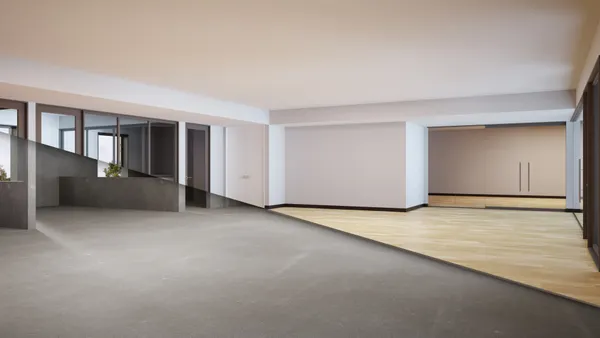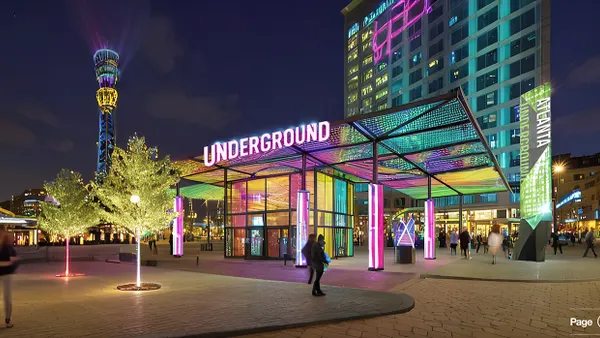Dive Brief:
- The Chicago Building Decarbonization Working Group, which formed last year, released its report with recommendations last week for equitably addressing greenhouse gas emissions from buildings, which account for nearly 70% of the city’s total emissions.
- The report lists 26 recommendations, including policy changes, studies and pilot programs. It says funding for such projects will be available locally, at the state level and federally through sources including the Infrastructure Investment and Jobs Act and the Justice40 Initiative.
- The 53-member working group received assistance with research and report development from Chicago-based environmental services organization Elevate and the Natural Resources Defense Council through the American Cities Climate Challenge. They held focus groups locally and analyzed decarbonization best practices from 12 North American cities.
Dive Insight:
The working group hopes the city turns the recommendations into real action that especially touches neighborhoods most in need, namely those historically excluded from participating in and benefiting from electrification and decarbonization initiatives, according to group member Courtney Hanson, who serves as deputy director of local environmental justice nonprofit People for Community Recovery.
“This is a great start. But whether or not it really reaches its goals is going to depend on implementation,” Hanson said. “The question now is really: Which of these recommendations will be prioritized and how will that happen?”
Recommendations include increasing energy-efficiency requirements, phasing out fossil fuel-powered appliances, creating a heat pump pilot program, developing a green bank and investing in demonstration projects. Another recommendation involves creating a centralized data and resource hub to help communities access tools, strategies and funding for reducing building emissions. It would be similar to the resource hubs in other cities including Boston, New York and St. Louis.
The working group would like the city to prioritize adopting a building performance standard that establishes energy performance targets for most existing buildings, Hanson said. Thus far, the city’s decarbonization work primarily has focused on new construction instead of existing buildings. That leaves many lower-income communities out of the conversation.
“New construction is not happening at the same rates in low-income communities,” Hanson said. “For that reason, the [building performance standard] is a big priority, and we're hoping we can get at least a framework through city council really soon.”
The working group also recommends creating a community accountability board to “make sure there’s an actual mechanism for communities to oversee how this gets rolled out and who’s benefiting the most from these policies,” Hanson said. “Everyone at the table is concerned about equity and really trying to think through various scenarios to ensure that we're prioritizing communities that have historically been disinvested in and trying to avoid unintended consequences.”
Benchmarking is important to ensure the building decarbonization strategy works, but the city should revisit and update its benchmarking process, Hanson said. Chicago implemented an energy benchmarking ordinance in 2014 that ultimately required buildings 50,000 square feet or larger to track energy use. But buildings of that size constitute less than 1% of Chicago’s building inventory and about 20% of total building energy use. The working group recommends expanding the program to include smaller buildings and create a bigger impact.
The city had initially suggested that the working group’s report likely would be released in autumn 2021. Reflecting on whether the year-long delay could hinder progress toward decarbonization goals or require reworked timelines, Hanson said, “I hope not. A lot has happened in that year — the city released its climate action plan, there was also the update to the building energy code — so I think the momentum is going in the right direction.”
She emphasized the desire to keep steady pace toward progress while developing and implementing the report’s recommendations, but “it's always hard to thread the needle between moving quickly enough so that we can make meaningful change and address the needs in communities, while also doing it at a pace that is including those communities.”












